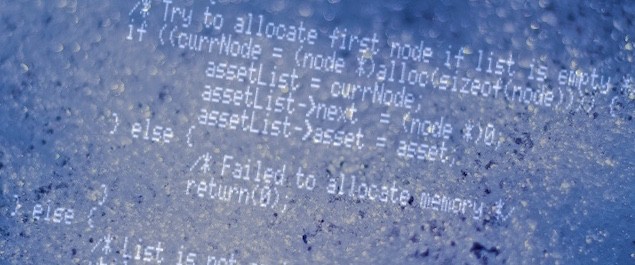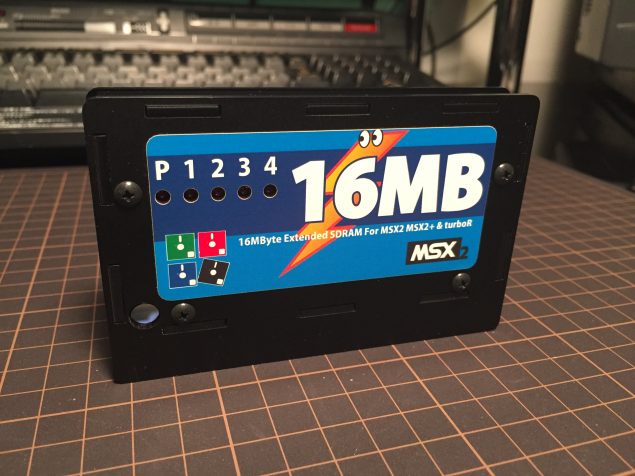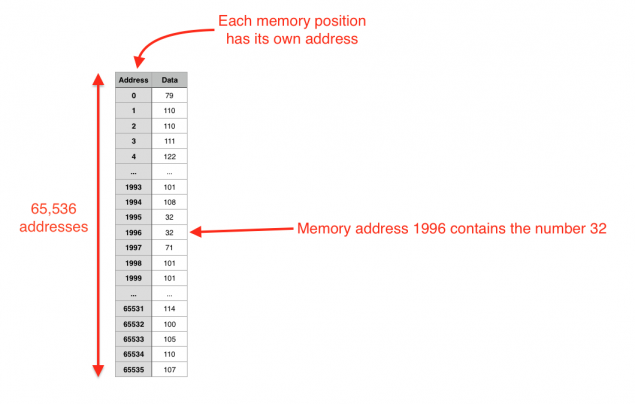Category Archives: Technology
Multi-review: MSX Memory Mapper, MEGA-MAPPER and MEMORY SAMURAI (Part 2 of 2)
Posted by Javi Lavandeira in Hardware,MSX,Retro,Reviews,Technology | July 18, 2016The previous part of this post ended with a few quick words about the MEMORY SAMURAI. Let’s continue where we left.
MEMORY SAMURAI by Classic PC & Game Rescue Committee
Manufacturer: Classic PC & Game Rescue Committe
The MEMORY SAMURAI arrives in a clear vinyl bag including the cartridge and a paper sheet with instructions. It’s nice enough, though a box would have been much better.
Keep reading below for the full review.
Read more ›Multi-review: MSX Memory Mapper, MEGA-MAPPER and MEMORY SAMURAI (Part 1 of 2)
Posted by Javi Lavandeira in Hardware,MSX,Retro,Reviews,Technology | July 13, 2016
How do you even review a memory expansion cartridge? Usually you just plug it into a cartridge slot, turn on the computer, and that’s all: your MSX computer now has more memory. There isn’t really much else to say, or at least there wasn’t, until now.
In this review we’re going to see two traditional MSX memory expansions (Repro Factory‘s MSX Memory Mapper and 8bits4ever!‘s MEGA-MAPPER), plus a very special new arrival: Classic PC & Game Rescue Committee’s MEMORY SAMURAI, which brings an astonishing 16MB of memory to our MSX computers.
I’ve never seen so much memory in an MSX computer before, much less know what to do with it. It is awesome nonetheless.
Keep reading, because there’s a lot to talk about.
Read more ›Relearning MSX #45: Pointers, arrays and strings (Part 2)
Posted by Javi Lavandeira in Development,How-to,MSX,Retro,Technology | June 20, 2016In the previous post we learnt what pointers are, their properties, and how to use them. However, most likely this didn’t help understand why pointers are so useful or why we even need them at all. Today we’re going to take care of that.
Pointers are most valuable when combined with other functionalities of the C language. Let’s start by taking a look at how they work with arrays.
Read more ›Game review: Uwol, Quest For Money (MSX2)
Posted by Javi Lavandeira in Fun,Games,MSX,Retro,Reviews,software,Technology | June 19, 2016Introduction
Back in 2009 the Spanish group Mojon Twins released Uwol, Quest For Money for the Spectrum 128K and made the full game and source code freely available for download. Later, in 2010, Shiru released a Sega Genesis port based on Mojon Twins’ code.
Now (June 2016) Imanok releases an MSX2 version. This is the one this review is about.

Uwol, Quest For Money – MSX2 title screen (click to enlarge)
Relearning MSX #44: Pointers, arrays and strings (Part 1)
Posted by Javi Lavandeira in Development,How-to,MSX,Retro,Technology | May 24, 2016
Pointers are a special type of data in the C programming language (and also C-like languages). In short, a pointer is just a variable that contains the memory address of some data in the computer. It’s a simple concept, but pointers are always a source of confusion when we’re learning the language. However, once understood they become a powerful tool that provide lots and lots of flexibility.
Today we’re starting a short series explaining what pointers are and how they can make our programs much more interesting. As always, don’t hesitate to ask in the comments below when anything isn’t clear.
Let’s begin.
The address operator (&) and the indirection operator (*)
Computers store all program data and variables in an area known as memory. In MSX computers memory is organized in 65,536 cells(*), each containing a number between 0 and 255 (known as a byte).
Each memory cell is identified by a number between 0 and 65,535 (0x0000 – 0xFFFF in hexadecimal). We call this the memory address.
It’s easy to visualize this concept if we think of the computer memory as an spreadsheet with 65,536 rows, such as this one:
Read more ›Changes to the Patron rewards for Relearning MSX posts
Posted by Javi Lavandeira in MSX,Retro,Technology | May 23, 2016Hi all,
First of all, thanks to all of you who support the creation of new Relearning MSX articles via your patronage on Patreon, and in your comments here, on the Facebook MSX groups, Reddit and Twitter!
Today I’ve changed the Patreon reward system. Until yesterday, the first four Relearning MSX posts every month were exclusive for Patrons for a week, and after that they became public for everybody.
Somebody gave feedback on Facebook, saying that announcing each post twice (once the moment it became available for Patrons, and once more a week later when it became public) felt too spammy.
In order to address this, all future Relearning MSX posts will be public from the very first moment. Patrons are still charged for the first four articles every month, but now everybody has access at the same time, whether they’re supporters or not. This also involves less work for me, since I don’t have to go back and forth setting up access passwords and keeping track of when articles become public.
If you find my programming articles useful, please consider becoming a Patron. Every little bit helps ensure that other life commitments don’t take precedence over writing new content.
Thanks!
Relearning MSX #43: Storage classes and variable scope in MSX-C
Posted by Javi Lavandeira in Development,How-to,MSX,Retro,Technology | May 13, 2016
We’ve already seen how to use local variables inside a function declaration. However, there are times when we want to be able to share the same variable between several functions. In this situation local variables aren’t the best solution.
There are other cases when we want to use a local variable, but we need the variable to retain its value between calls to the function.
In this chapter we’re going to see how to declare and use variables to support these two situations.
The storage class of a variable
All variables in C have a property called storage class. The storage class defines the lifecycle of a variable. This means that depending on this property, a variable can either be created and destroyed several times during the execution of a program (whenever we call the function or block that defines the variable), or created once and exist until the program finishes.
Variables in MSX-C can belong to one of the two storage classes below:

Storage classes in MSX-C
Relearning MSX #42: Functions in MSX-C (Part 3)
Posted by Javi Lavandeira in How-to,MSX,Retro,Technology | April 12, 2016The previous post dealt with function arguments and private variables inside functions. Today we’re going to complete our study of functions by looking at how we can return values from them.
Let’s jump into it.
Read more ›Relearning MSX #41: Functions in MSX-C (Part 2)
Posted by Javi Lavandeira in How-to,MSX,Retro,Technology | March 4, 2016

It’s been a bit over two months since the previous post. In it we learnt how to define simple functions that don’t take or return any parameters. We also learnt that we need to declare a function if we’re calling it at a point in our program where it hasn’t been defined yet.
Today we’re resuming the course exactly where we left it. If you need a refresher then go ahead and re-read the previous chapter. As always, don’t hesitate to ask questions in the comments below if anything isn’t clear.
Let’s see a few more properties of functions in C:
Read more ›Review: 8bits4ever’s FDC-600 floppy disk controller
Posted by Javi Lavandeira in Hardware,MSX,Retro,Technology | February 12, 2016Last December as the year was about to end I received 8bits4ever‘s FDC-600 floppy disk controller for MSX computers and Tweeted about it:
Just received this little beauty from Spain! When the stores open I'll go buy a floppy drive to test it. #msx #retro pic.twitter.com/NupL0btBUU
— Javi Lavandeira – #JoSócCDR (@javilm) December 31, 2015
The plan was to go buy a floppy drive and a couple of cables and write a review immediately after the New Year vacation, but I focused on other things for a while.
It has taken a while, but here’s the review.
Read more ›



